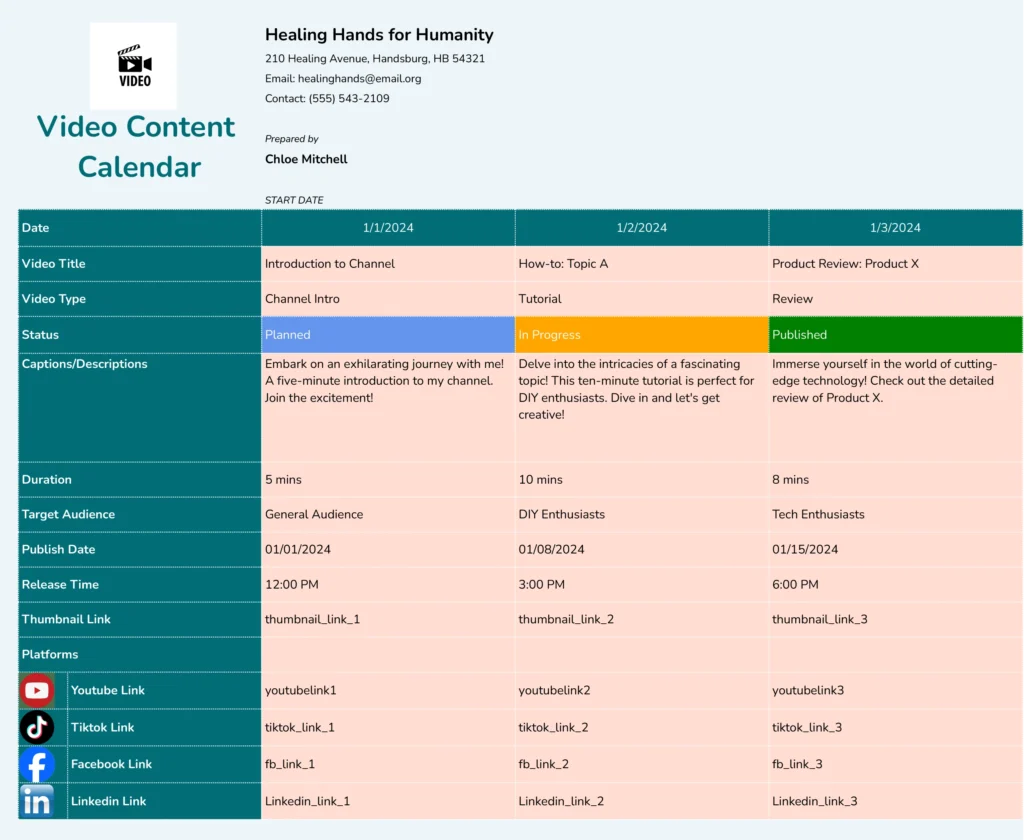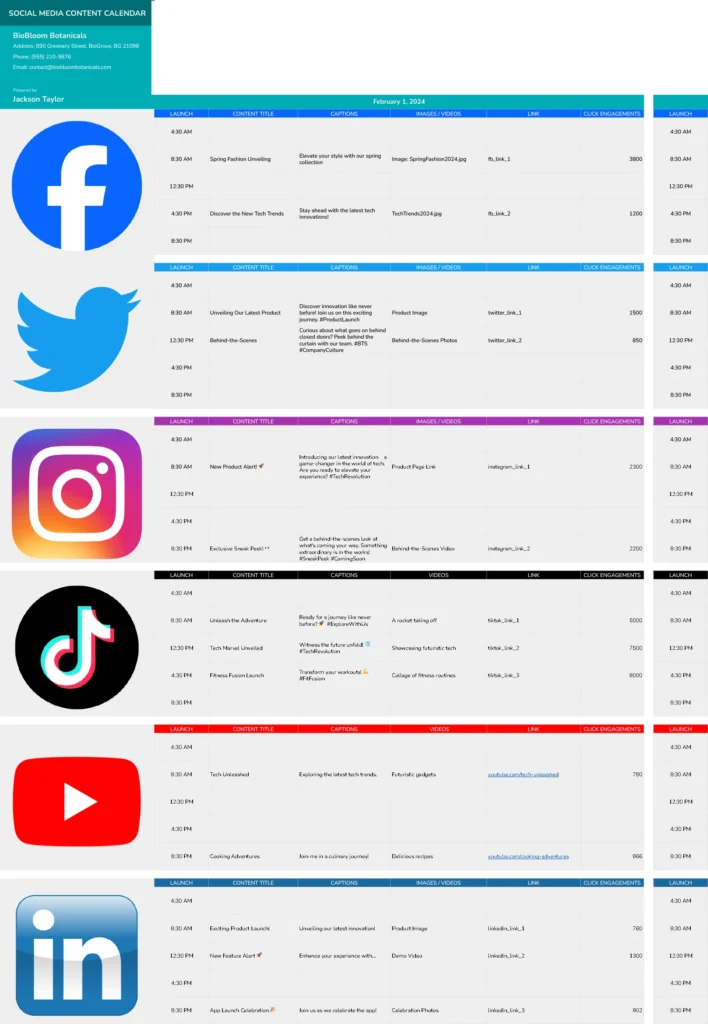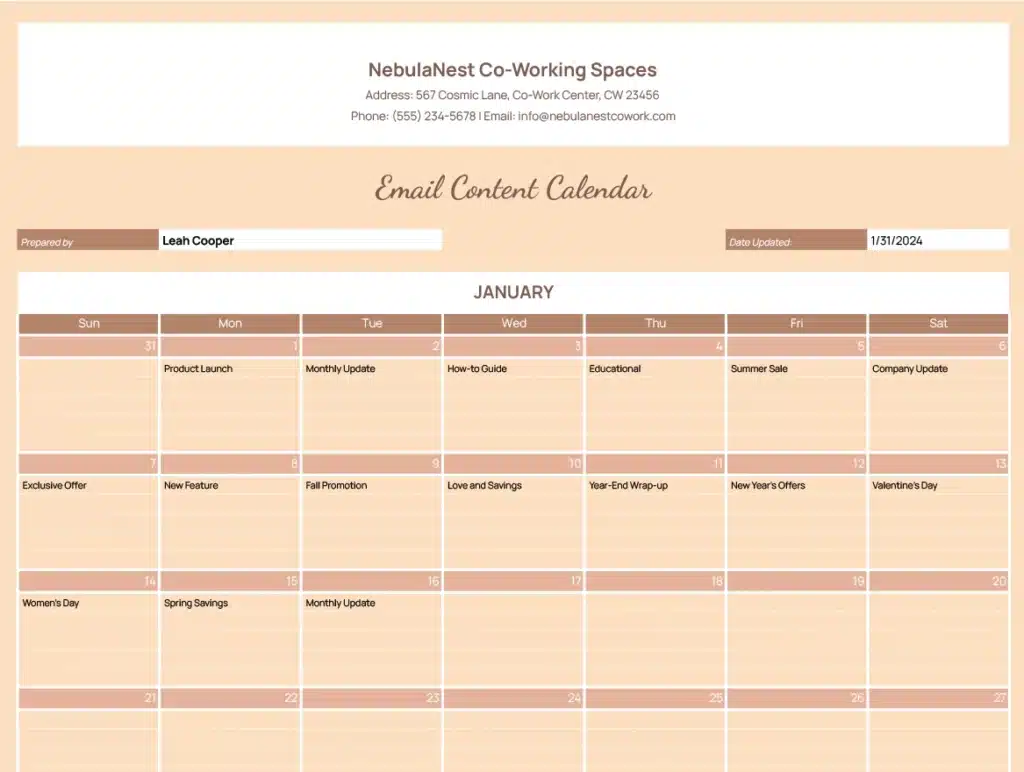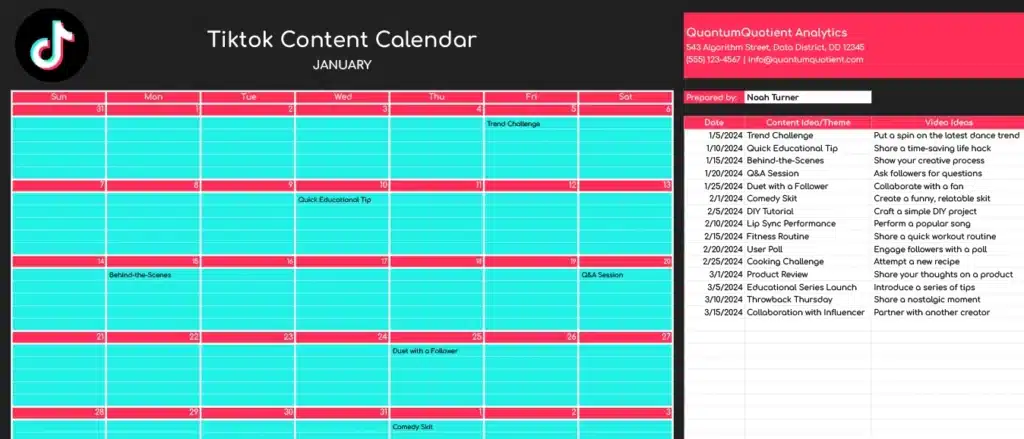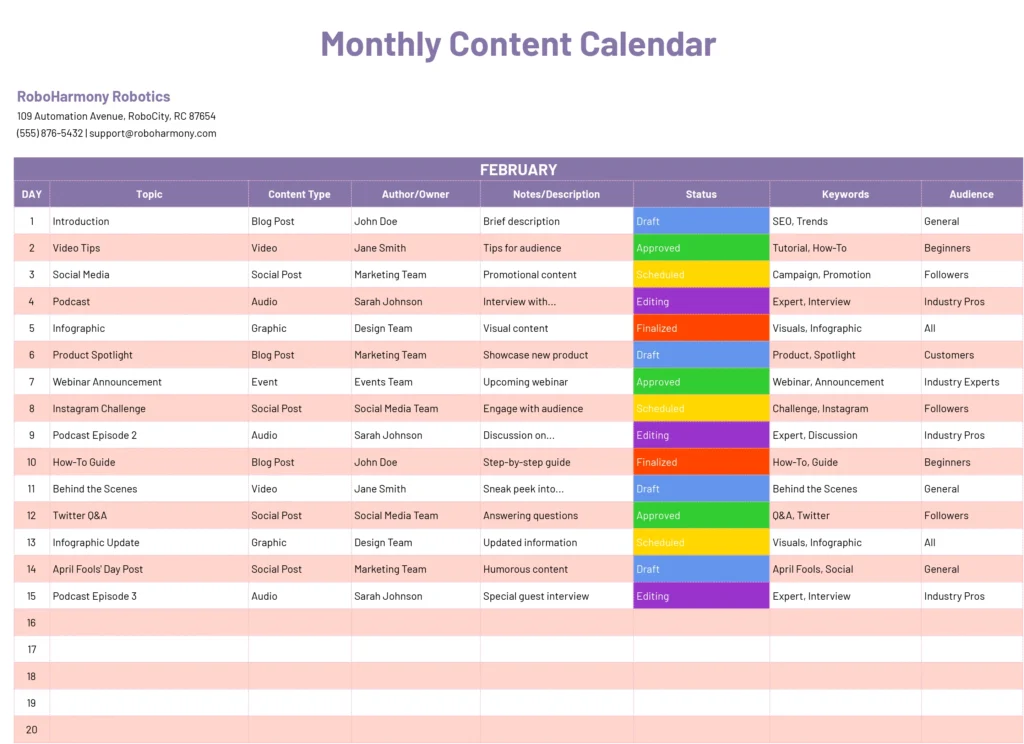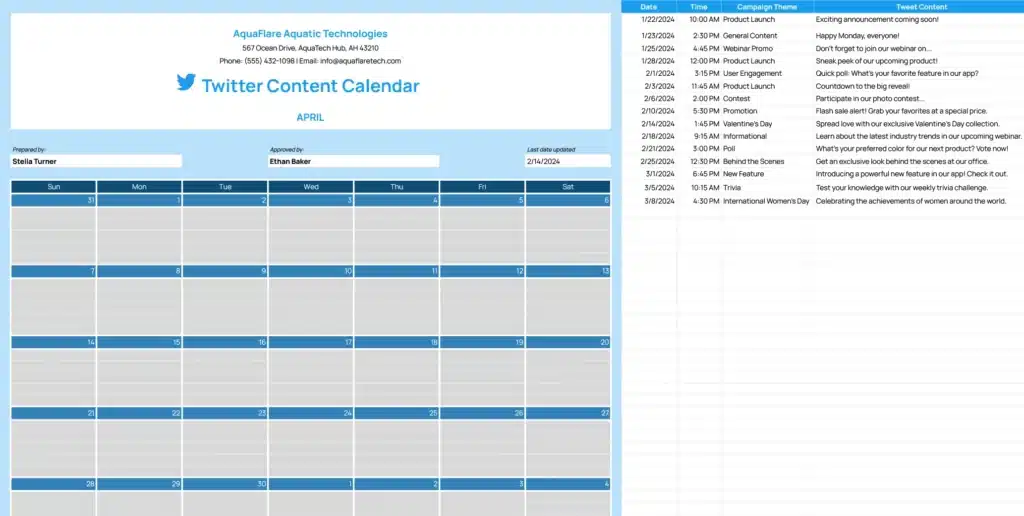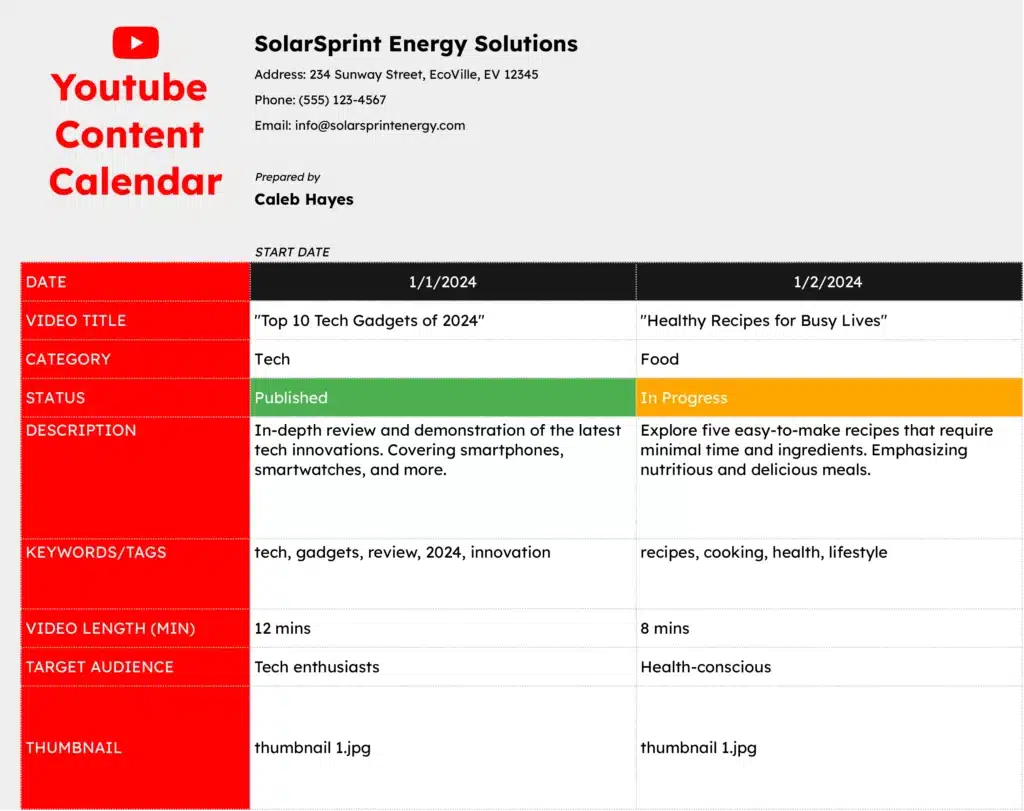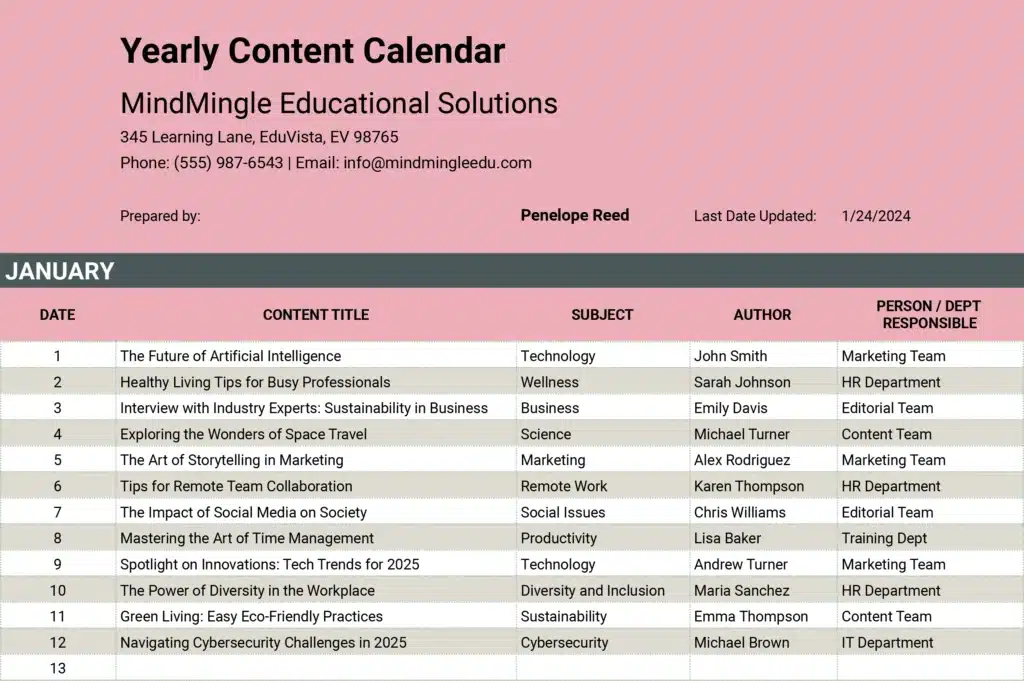
Content Editorial Calendar Template
Elevate Your Content Strategy with Our Content Editorial Calendar Template


More Content Calendar Templates
Browse Other Templates

Why Use a Content Editorial Calendar Template?
Strategic Planning
Plan your content strategy in advance, ensuring alignment with your business goals, target audience, and overarching marketing objectives.
Improved Organization
Stay organized by having a centralized platform where you can manage all aspects of your content creation process, from ideation to publication.
Consistency in Publishing
Maintain a consistent publishing schedule by scheduling and tracking your content in advance, helping you stay on top of deadlines and maintain engagement with your audience.
Key Features of the Content Editorial Calendar Template
Month-at-a-Glance Overview
View your content strategy for the entire month, including planned topics, publication dates, content types, and assigned writers.
Detailed Content Planning
Plan each piece of content with precision, outlining key details such as target keywords, content format, intended audience, and any relevant links or resources.
Customizable for Your Needs
Tailor the template to fit your specific requirements by adding or removing columns, adjusting formatting, or incorporating additional features as needed.
How to Create an Editorial Content Calendar
To create an editorial content calendar:
- Define Your Content Goals: Determine the objectives of your content strategy, such as increasing brand awareness, driving website traffic, or generating leads.
- Identify Your Audience: Understand your target audience’s needs, interests, and pain points to create content that resonates with them.
- Brainstorm Content Ideas: Generate a list of topics and themes that align with your goals and audience preferences.
- Plan Your Content Schedule: Map out your content schedule by assigning publication dates, topics, and responsible team members.
- Regularly Review and Update: Continuously monitor and adjust your editorial calendar to reflect changes in your strategy, market trends, or audience feedback.
What Should a Basic Editorial Content Calendar Include?
A basic editorial content calendar should include:
- Publication Dates: Scheduled dates for publishing content.
- Content Topics: Planned topics or themes for each piece of content.
- Content Types: The format or medium of each piece of content (e.g., blog post, video, infographic).
- Assigned Writers: Responsible team members or authors for each piece of content.
- Status Updates: The stage of progress for each piece of content (e.g., ideation, writing, editing, scheduled).
What is the Best Format for an Editorial Calendar?
The best format for an editorial calendar depends on your team’s preferences and workflow. Some common formats include:
- Google Sheets or Excel: Provides a customizable and collaborative platform for organizing and tracking content.
- Project Management Tools: Platforms like Trello or Asana offer visual boards and task management features that can streamline content planning and execution.
- Content Management Systems (CMS): Many CMS platforms, such as WordPress or HubSpot, offer built-in editorial calendar features for planning and scheduling content directly within the platform.
What is the Difference Between Editorial Calendar and Content Calendar?
While the terms are sometimes used interchangeably, there is a distinction between an editorial calendar and a content calendar:
- Editorial Calendar: Primarily focuses on planning and scheduling content for publishing, often used by media organizations or publications to manage articles, blog posts, and other editorial content.
Content Calendar: Encompasses a broader range of content types and formats, including blog posts, social media updates, email newsletters, and multimedia content. It may also include elements such as content themes, target keywords, and distribution channels.

